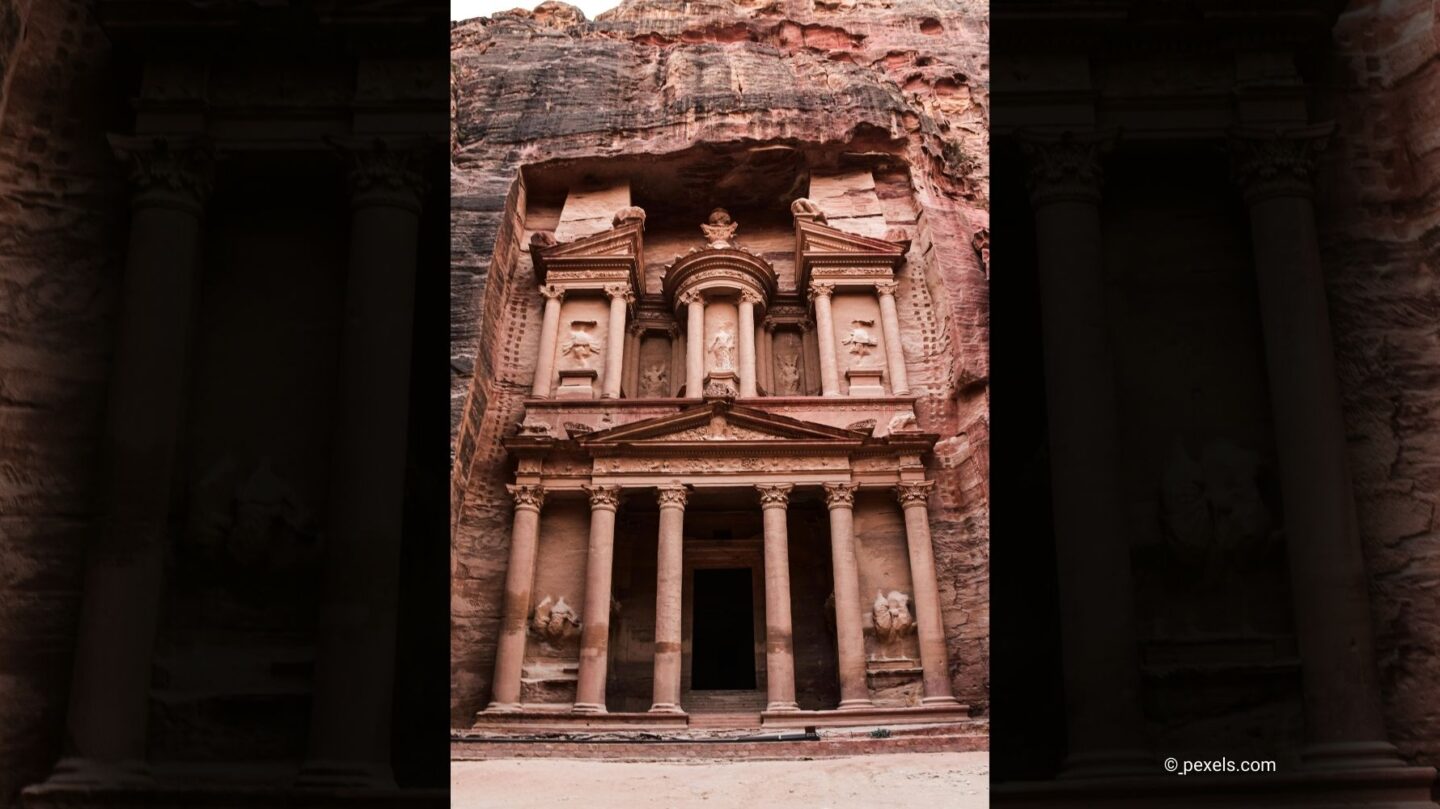The Birth of a Hidden Marvel
Petra, known as the “Rose-Red City” for its pink sandstone cliffs, is one of the most iconic archaeological sites in the world. Nestled in the rugged mountains of present-day Jordan, Petra was established as the capital of the Nabataean Kingdom around the 4th century BCE. Its strategic location along major trade routes allowed it to flourish as a hub for commerce, connecting the Mediterranean world with Arabia and the East.
What makes Petra extraordinary is its unique architecture. The Nabataeans carved elaborate tombs, temples, and other structures directly into the rock, creating a city that seamlessly blends with its natural surroundings. For centuries, Petra remained hidden from the world until its rediscovery in 1812 by Swiss explorer Johann Ludwig Burckhardt.
Engineering Marvels of the Nabataeans
The Nabataeans were skilled engineers and architects, and their ingenuity is evident throughout Petra. One of their most impressive accomplishments was their advanced water management system. Living in a harsh desert environment, they constructed a network of cisterns, canals, and aqueducts to collect and store rainwater, ensuring a reliable supply for the city’s population and its thriving agriculture.
The city’s crowning jewel is the Treasury, or Al-Khazneh, a magnificent rock-cut façade standing over 40 meters tall. Originally believed to be a royal tomb, its exact purpose remains uncertain. With its intricate Corinthian columns and detailed carvings, the Treasury is a testament to the Nabataeans’ artistry and their ability to incorporate influences from Greek, Roman, and Egyptian cultures.
Other notable structures include the Monastery (Ad Deir), a massive temple that rivals the Treasury in grandeur, and the Royal Tombs, a series of ornate burial sites that line Petra’s cliffs.
A Hub of Trade and Culture
Petra’s prosperity was rooted in its role as a major trading center. The Nabataeans controlled lucrative trade routes that brought goods such as incense, spices, silk, and ivory through the city. As a result, Petra became a melting pot of cultures, blending Arabian traditions with Hellenistic and Roman influences.
The city’s wealth allowed the Nabataeans to build grand monuments and maintain a cosmopolitan society. However, Petra’s fortunes began to decline in the 1st century CE, as shifting trade routes and the Roman annexation of the Nabataean Kingdom diminished its importance.
Petra’s Rediscovery and Modern Significance
After the fall of the Nabataeans, Petra was largely abandoned and forgotten, known only to local Bedouins. It wasn’t until the 19th century that the city was brought to international attention. Johann Ludwig Burckhardt, disguised as a Muslim pilgrim, persuaded local guides to show him the site, marking the beginning of Petra’s rediscovery.
Today, Petra is a UNESCO World Heritage Site and one of the New Seven Wonders of the World. It attracts millions of visitors annually, who are awed by its beauty and history. However, tourism and environmental factors pose challenges to the site’s preservation, prompting efforts to protect Petra for future generations.
A Legacy Carved in Stone
Petra is more than a city; it is a testament to human ingenuity, resilience, and creativity. Its stunning architecture and sophisticated engineering reflect the achievements of the Nabataeans and their ability to thrive in a harsh environment. As a cultural crossroads and a masterpiece of design, Petra continues to inspire awe, offering a glimpse into a civilization that carved its legacy into the heart of the desert.
